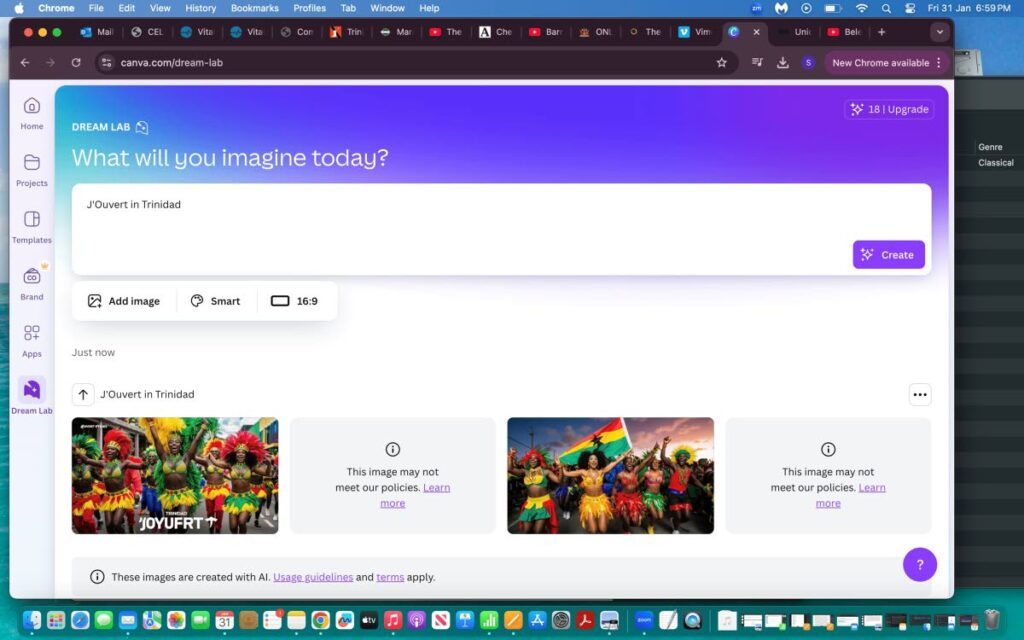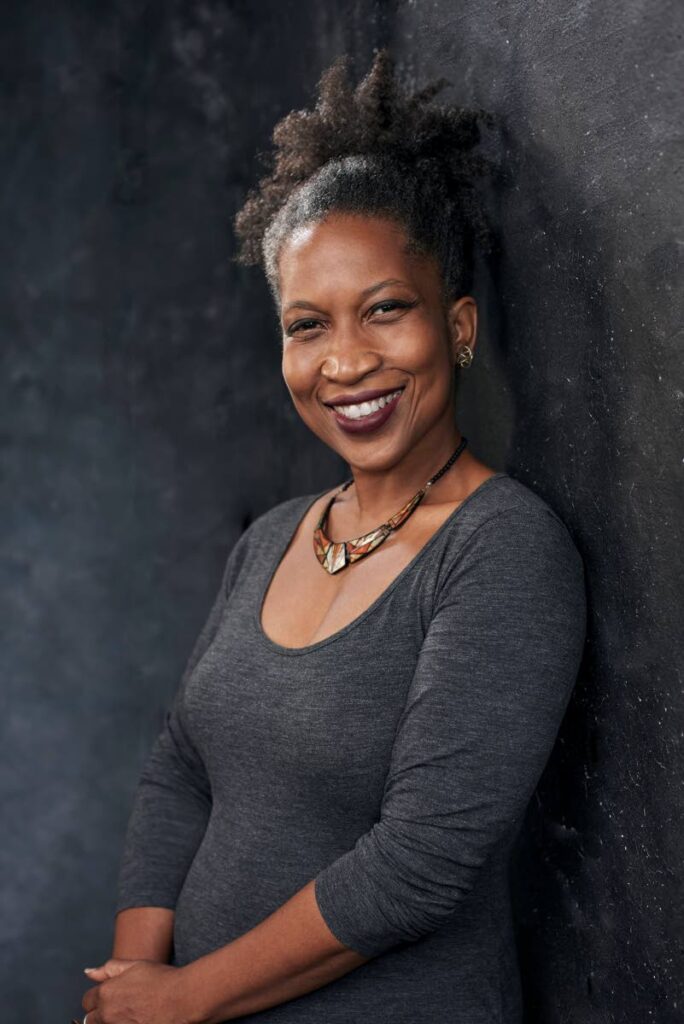J’Ouvert in the world of AI

Sonja Dumas
In one of my addictive bouts of social media scrolling, I came across a post on the page Look into My Eyes, an account I had begun following a few months ago. The page belongs to Roger Lewis, an accomplished photographer, whose photographs generally capture the beauty of people attending events, from fetes to religious ceremonies. Of course, Carnival is in the mix.
So imagine my surprise to see a recent post from Mr Lewis imploring the owners/keepers of social media to please stop censoring his images and that “CARNIVAL IS A CULTURE OF EXPRESSION and CARNIVAL IS ART. It is not VIOLENCE or sexual content.” Specifically, he requested that we, his followers please help him “make it through the Carnival season without being banned” by tagging or mentioning (@Facebook in the comments section of his post, so that the algorithm and its makers might figure out the real situation.
This is just one instance of censorship by an algorithm that wasn’t programmed to compute for various cultures. It doesn’t always distinguish between innocently wining on someone and the actual sex act, nor does it understand that the metaphoric terror of the jab molassie goes back to the early days of emancipation and that both of these have deep socio-cultural meaning.
So it errs on the side of the moral values of spaces that don’t share the cultural environment and history that we do in the Caribbean.
Given the leaps and bounds that artificial intelligence has made in a mere two or three years, the social-media content filter is an algorithm that could now be called a “basic” form of artificial intelligence (AI) which separates the sheep from the goats.

It just doesn’t always understand how to separate the keskidees from the common fowls.
I myself went on to a popular graphic-design app to experiment with its new AI creation tool (the free version, ’cause I’m cheap).
I plugged in the term “J’Ouvert in Trinidad.” Frontal views of preternaturally pretty young people in a pretty mas band popped up, prancing in the street, looking as if they greeting you with open arms, wearing an array of red, green and yellow costumes. One might even say ites, green and gold (if yuh know, yuh know). They all seemed to come from one single racial profile.
And not a drop or dab of paint or mud in sight. No rhythm section bringing up the rear. And certainly no wining images or blue devils.
And even then, some of the images in the group were not displayed, but were replaced with a caption that read: “Some of these images may not meet our policies.” One captioned the image with the word, “‘Joyufrt.” Go figure.
When I plug in the word “J’Ouvert” alone into ChatGPT, a fairly sanguine answer comes up: “J’Ouvert is the highly anticipated, energetic prelude to TT’s Carnival celebrations. It takes place on the Monday morning before Carnival Tuesday, marking the official start of the festivities. The word ‘J'Ouvert’ comes from the French jour ouvert, which translates to ‘daybreak’ or ‘dawn,’ symbolising the beginning of the Carnival.”
It goes on: “The event is a mass street party, where people take to the streets early in the morning to dance, party, and celebrate, often covered in colourful paint, mud, oil or even chocolate. It’s a chaotic, wild, and joyful experience, where the usual rules of society are thrown out the window, and people from all walks of life come together as equals.” Not wrong, but not at all nuanced.
In all fairness, it does go on to give a little history of the origins of the J’Ouvert phenomenon, so at least the general interpretation is correct.
But accurate visuals of the J’Ouvert seem to elude some algorithms and scandalise others. They just don’t get it.
Or maybe they do. The power of human-to-human contact is visceral and, I would argue, a good J’Ouvert can be life-changing. So maybe it’s too human for AI filters and too sensuous and freeing for its creators to handle.
I suppose I should be happy that AI hasn’t yet made the final leap to compete with full cognitive and affective human brain function, and that there are not too many robots that have been programmed to wine and get on bad.
However, when that happens, that too will likely carry the biases of its creators. Cultures, beware.
Sonja Dumas thinks the occasional Caribbean cultural thought, which she tends to turn into words, dance or film.

Comments
"J’Ouvert in the world of AI"